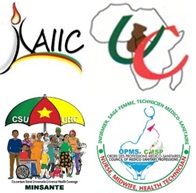Submissions > Full Paper GuidelinesGeneral Information
The following reference documents may help you format your text according to APA standards:
General InstructionsTypographic Standards
General Page Layout Standards
Paragraph Format
Titles and Subtitles Format
Structure and Guidelines for Empirical Research Articles, Meta-syntheses, or Meta-analysesMaximum length: 3,000 words, including references. Article Title Should represent the content of the text and not exceed 20 words. Abstract Submitted texts must include an abstract in French and English. The abstract must not exceed 250 words and should be structured as follows: problem, hypothesis or objective, methodology (research method, participants, sampling method and sample size, data collection tools, data analysis strategy), main results related to the hypothesis or objective, conclusion. Keywords: Between 4 and 6 keywords are required, presented in French and English, including participants and study site if applicable. Introduction Describes the context, background problem, literature review summary, research problem, epistemological and theoretical positioning of the study if applicable, and the research objectives or hypotheses. Methodology Briefly presents the study site and period, research method, variables, experimental design if applicable, data collection tools, participants (population, sampling, inclusion and exclusion criteria, sample size, etc.), data collection procedure and ethics clearance number, and data analysis strategy. Results Presented according to each operational hypothesis or specific research objective. Discussion Compares results with those of other researchers, discusses external validity, theoretical and practical implications, and limitations of the study. Conclusion Final conclusions are presented. References Presented according to APA 7th edition, maximum of 25 references.
Structure and Guidelines for a Reflection PaperThe paper must not exceed 2,000 words, including references. Article Title It must be representative of the content of the text and must not exceed 20 words. Abstract Submitted papers must include an abstract in French and English. The abstract must not exceed 250 words and should be structured as follows: problem, the author's theoretical or epistemological positioning, objective of the reflection, a very brief presentation of the main and secondary ideas developed in the text, conclusion. Keywords: Between 5 and 8 keywords are required, presented in French and English. Introduction The introduction should describe the context, the problem addressed in the reflection and/or the theoretical debates underlying the problem, the objective of the reflection, and the main ideas that structure the reflection. Section 1 Presents a structured and supported argument of the reflection on the first idea. This structured argument is illustrated by subdividing the section into subsections. Section 2 Presents a structured and supported argument of the reflection on the second idea. This structured argument is illustrated by subdividing the section into subsections. Section n Presents a structured and supported argument of the reflection on the nth idea. This structured argument is illustrated by subdividing the section into subsections. Conclusion The conclusion should summarize the main elements of the reflection. References References must be presented according to APA 7th edition and must not exceed 25 references. Format of Numbers, Tables, and Figures
In-text Citations, Quotations, and Reference ListIn-text citations guide the reader to the complete reference in the reference list (Hirschauer, Gainon, & Loisel, 2019). They include the author(s), year of publication, and page number if quoting.
Example 1: According to Tchoffo and Lélé (2024), nursing care is …
Example 2: It seems that protective factors play a key role in the resilience of individuals who have experienced adversity (Tchoffo & Lelé, 2024).
Note: In the reference list, only the ampersand '&' is used. Examples of ReferencesBook: The book title is italicized. Kimessoukié Omolomo, E. & Sah Tatsing, F. (2021). Nursing intervention framework in the context of the Covid-19 pandemic. AIIC. Yaoundé. 175 pages. Yaoundé: PUCAC. Ambomo, S.M, Kimessoukié Omolomo, E., & Onambelé, L. (Eds.). (2023). Challenges of the nursing profession in Africa: Rethinking the promotion of Nursing Science. Paris: L’Harmattan Cameroun. 472 pages. ISBN: 978-2-336-42118-6. Book Chapter: The book title is italicized, not the chapter title. Messe Nguegang, T.M., Missi, P.M., Kimessoukié Omolomo, E., Edoa Eyenga, P., Ekassi, F., & Mbu Enow, R. (2023). Challenges of the nursing and midwifery professions in managing obstetric emergencies in Cameroon. In Ambomo, S.M, Kimessoukié Omolomo, E., & Onambelé, L. (Eds.), Challenges of the nursing profession in Africa: Rethinking the promotion of Nursing Science (pp. 127-146). Paris: L’Harmattan Cameroun. ISBN: 978-2-336-42118-6. Journal Article: For English journal titles, each word should begin with a capital letter. Douti, B., Kimessoukié Omolomo, E., & Eymard, C. (2024). Development and validation by confirmatory factor analysis of the Self-care Assessment Scale for people living with hypertension (EVA-H) in Africa. Revue Francophone Internationale de Recherche Infirmière, 10(3). https://doi.org/10.1016/j.refiri.2024.100330 Online Document: Kimessoukié Omolomo, E., Jourdan-Ionescu, C., Ionescu, S., & Lapointe-Gagnon, M. (2018). Meta-synthesis of theoretical approaches to resilience in engineering, environmental sciences, and economics. In C. Jourdan-Ionescu, S. Ionescu, E. Kimessoukié Omolomo, & F. Julien-Gauthier (Eds.), Resilience and culture, culture of resilience (pp. 902-912). Québec, Canada: Livres en ligne du CRIRES. Available at: https://lel.crires.ulaval.ca/oeuvre/resilience-et-culture-culture-de-la-resilience. |


